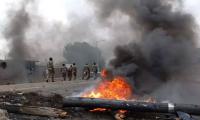This year marks the 10th anniversary of the Belt and Road Initiative (BRI). Conceived initially as One Belt One Road, its subsequent expansion across diverse regions led to its rebranding as the BRI.
The third Belt and Road Forum (BRF) recently convened in Beijing, from October 17 to 18, to commemorate the initiative’s first decade. This gathering saw the participation of 20 heads of state and government, international organization heads, including the United Nations secretary-general, and over 1500 high-level delegates.
So, how has the BRI performed in its first ten years?
The figures are undeniably impressive. Since its inception in 2013, over 150 countries, including 18 of the European Union’s 27 member states, have joined this initiative. China, now the largest creditor in the developing world, has invested billions of dollars in roads, railways, energy, and various infrastructure projects across Eurasia, Africa, and Latin America. As per statistics disclosed during the third BRF, the BRI has generated 420,000 jobs and has lifted 40 million people out of poverty. When the Covid-19 pandemic struck, China supported BRI partner countries substantially, distributing more than 10 billion masks, 2.3 billion vaccine doses, and engaging in joint vaccine production with over 20 nations.
The Chinese leadership attributes this success to the BRI’s cooperative model, centered on “planning together, building together, and benefiting together.” The BRI aims to improve connectivity and integration across regions and sectors, addressing global challenges such as poverty, climate change, pandemic response, and digital transformation. The statements of world leaders who attended the third BRF underscored that the BRI respects the diversity and sovereignty of each participating country while aiming to foster mutually beneficial outcomes.
“In a world dominated by geoeconomics, the BRI is not a geopolitical or ideological agenda, but rather a vision of openness and inclusiveness, focused on environmentally friendly and people-centric global economic development," was the message given to the BRF participants from the Chinese leadership. Chinese President Xi Jinping, in his opening address, called for the expansion and alignment of BRI cooperation with global development agendas such as the Sustainable Development Goals (SDGs) and the African Union’s Agenda 2063.
He highlighted “eight key steps” for the BRI’s future. These steps involve upholding the principles of consultation, contribution, and benefit-sharing; enhancing policy coordination and synergy; deepening integrity-based development cooperation across various fields, including advanced scientific and technological innovation and artificial intelligence governance; fostering multidimensional international relations; promoting green development and the transition to low-carbon economies; and increasing support for developing countries through a $95.8 billion allocation from China Exim Bank and the New Development Bank.
Despite criticism from certain quarters that BRI countries may fall into a debt trap, the fact remains that the BRI has filled a significant void in global development financing. To elucidate, consider the words of UN Secretary-General Antonio Guterres from February 2023: “Today’s polycrises are compounding shocks on developing countries – largely due to an unfair global financial system that is short-term, crisis-prone, and exacerbates inequalities. We need to significantly increase affordable, long-term financing by aligning all financial flows with the SDGs and improving the terms of lending from multilateral development banks. The high cost of debt and growing risks of debt distress demand decisive action to make at least $500 billion available annually to developing countries and convert short-term lending into long-term debt at lower interest rates.”
Chinese financing is actively contributing to rebalancing the global financial system. According to a report from AidData, a US-based research lab, China provided $462 billion in official finance to 164 countries between 2008 and 2019, surpassing the contributions of $467 billion by the World Bank and $89 billion by the IMF.
Addressing concerns related to the potential debt trap within the BRI (including the China-Pakistan Economic Corridor – CPEC) is pivotal and calls for a comprehensive understanding of the dynamics at play. It is true that a substantial portion of the financing within BRI initiatives takes the form of debt extended to member countries for their identified projects. However, it is essential to recognize that debt in itself is neither good nor bad. It is a financial tool whose value depends on how it is employed.
The BRI and the various financial institutions operating under its umbrella serve to address the deficiencies of weakening global financial institutions, which often attach numerous conditions and requirements to their financing for developing countries. These strings attached to traditional funding sources can limit the flexibility and suitability of the financing for the unique needs of recipient countries. In this context, it’s worth considering that had global financial institutions been more supportive of the developing world, alternative means of development cooperation like the BRI might not have been necessary.
Nevertheless, it is important to underscore that ‘no strings attached’ financing, while seemingly advantageous, can pose a risk if borrowing governments do not exercise responsibility and maturity in managing the funds. Therefore, the responsibility for prudent fiscal management and wise investment ultimately lies with the borrowing governments. They must ensure that the borrowed funds are deployed in a manner that enhances productivity and fosters inclusive growth. It is not entirely fair to attribute the blame for fiscal mismanagement solely to the BRI; it is a shared responsibility.
Transparency is another crucial aspect of responsible borrowing and implementation. It is the duty of borrowing governments to maintain transparency throughout the negotiation and execution of BRI projects. This transparency promotes a shared domestic consensus on the country’s developmental needs. It is a critical step in building trust and encouraging collaboration among stakeholders.
Furthermore, borrowing governments have an obligation to be accountable to their citizens for any borrowing undertaken in the name of development. This accountability ensures that the benefits of BRI projects are shared equitably and that any challenges that may arise are addressed with due diligence.
It’s noteworthy that China has taken significant steps to address the perception of the BRI. In 2019, during the second BRF, China introduced a ‘Green BRI’ model. Notably, during this event, China provided leadership in advancing the Paris Declaration on climate change. This proactive stance helped fill the void left by the US’s withdrawal from the ‘Paris Climate Change Commitments’ under the Trump administration.
Furthermore, China’s decision to halt financing for coal-based power plants outside its borders demonstrates its commitment to environmental sustainability and its resolve to mitigate the ecological impact associated with BRI projects.
In addition to environmental considerations, China is also showing a keen awareness of concerns related to the potential debt trap associated with the BRI. Among the eight strategic steps outlined for the future of the BRI, the seventh step underscores the promotion of integrity-based cooperation within the Belt and Road framework.
President Xi Jinping explicitly conveyed this initiative, noting, "China will establish an integrity compliance evaluation system for companies engaged in Belt and Road Cooperation and will provide information on the progress and prospects of integrity-building within the BRI." This commitment highlights a dedicated effort to ensure the responsible and sustainable execution of BRI projects while simultaneously addressing any apprehensions regarding debt and transparency.
In measuring the impact of an initiative, we often look to its critics as a yardstick. When critics begin to recognize and offer alternative options, it reflects the initiative’s influence. To counter the geoeconomic reach of the BRI, an India-Middle East-Europe Economic Corridor (IMEC) was announced at the recent G20 summit in Delhi (though IMEC remains a non-starter due to the unfortunate developments in the Middle East).
Furthermore, the US has pledged to increase its lending to developing countries through the World Bank. Such evolution within the global development landscape signifies the BRI’s substantial impact and its role in shaping the future of international cooperation. Which mode of cooperation would be beneficial for a country like Pakistan does not depend on the source of funding but on our readiness and preparedness. Are we ready for next-generation international cooperation?
The writer was an invited speaker at the BRF’s High-Level symposium on ‘Building New Vision for the Green Silkroad’. He tweets/posts @abidsuleri
Postman argues that “typographic mind” was yielding to “televisual mind”
Pakistan is well poised to meet opportunities that Artificial Intelligence will offer for developments in industries
Smog isn’t merely 'environmental' issue anymore, it is public health emergency, socioeconomic burden
As it evolves into Next Generation Air Force, PAF draws strength from its rich history and lessons learned from past...
Local govts of Punjab and WASAs as service delivery agencies are responsible for planning, providing services
Survey conducted in prisons highlights distinct patterns of crime shaped by socio-economic and demographic factors







